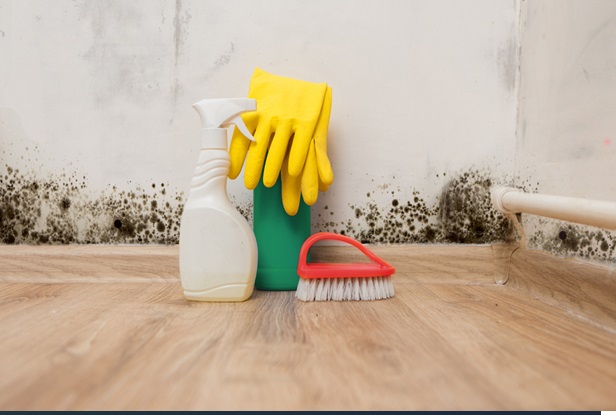Warning Signs you Might have Mold in your Home

The complications we can encounter in both old and new houses are plentiful. One of the most frequent issues is mold. Mold can induce structural damage to your home and affect your health as well. Mold is easily noticed as the black spots start appearing on the walls, but sometimes it can be quite subtle so you don’t catch it as early as possible. We interviewed the mold experts at Elite Moisture Solutions to get a better understanding of what to look for, and here is what they said in terms of examples that will showcase some of the telltale signs of mold and which health issues it can cause if you’re exposed to it daily.
Musty odor and Dark, spotted areas on the walls
If you notice your home suddenly has a musty, stale smell despite being recently cleaned you may have mold developing out of sight. This smell comes from microbial volatile organic compounds, or MVOCs for short, which mold emits during the process of growing. The gases produced vary depending on the current stage mold is in and they usually get worse as the spreading stage starts.
Ways in which mold can manifest are numerous and the surfaces where it appears might lose color. It can even start looking like minor spots or wet patches on the wall. The colors it can present itself in vary from green to grey, even black. If your wall is erupting in various, oddly shaped spots there’s likely mold forming right underneath the surface.
Wallpapers are getting deformed and peeling off
Sometimes mold forms between the wall and wallpaper. This happens due to water vapor getting trapped between the two. At some point, most often during summer, condensation begins to form on the backside of the wallpaper leading to mold growth and even degradation of the wall and wallpapers. This usually manifests as peeling or surface damage on your wallpaper. Even if this damage is caused by moisture it’s very likely mold will soon follow.
The area between shower tiles is dark
The bathroom is the most frequent location for mold. One of the main reasons is that we shower with hot steaming water, which over time causes mold to appear between the tiles and in the corners. While it does form, this type of mold isn’t as harmful as the other types. This is no reason to postpone cleaning it out as it could cause problems later, as well as be a lot harder to completely remove due to the sheer volume of it.
Heating or air conditioning smells weird
Air conditioning or heating systems can also cause mold to appear in your home as it needs moisture and an organic food source to grow. These systems usually contain condenser and evaporator coils that contribute to condensation. Condensation itself causes water leakage if not properly maintained. If mold forms inside of these devices you’ll experience an uncomfortable, musky smell coming from them next time they are turned on.
Not all moisture is mold
Some mold problems can occur due to flooding. To avoid this make sure to deal with the damp areas in your home as soon as possible, it will save you time and money in the future. Of course, your home can be mended in case water didn’t penetrate to deep into your house.
Health issues that come with mold infestation
The visible damage on our property isn’t the only way to know if we have mold in our home, it is also possible to confirm an infestation exists by keeping an eye out on negative effects it may have on our health. The cause of these effects is the fact that certain molds are toxigenic, which means they can produce toxins. These toxins are called mycotoxins and can induce a variety of health issues.
Persistent cold and itchiness
One of the most frequent symptoms you will experience heavily resembles the common cold. Subtle effects such as the perpetually runny nose and frequent sneezing are commonly caused by mold. The real problem isn’t the intensity of symptoms, it’s the duration of them. The length and persistence of these symptoms come from mold repeatedly agitating our immune system, causing it to respond with measures meant to prevent infection by foreign bodies.
Constant, uncomfortable itchiness can also be caused by mold. This happens when mold sticks to clothing. Leaving wet clothes or towels to dry indoors is a quick way of getting your clothing infested by mold. All damp cloth should be dried as fast as possible to prevent this from happening.
Long seasonal allergies
While seasonal allergies are a problem. It’s even worse when they end up lasting past their due date. If you cannot shake allergies off for months there’s a high chance you are allergic to mold and your living quarters are infested by it. Furthermore, mold can intensify existing allergies and even mimic their effects. This can lead to a lot of confusion about the nature of the current allergic reaction.
Headaches
As if headaches weren’t already too troublesome and easy to get they can also be caused by mold. It’s usually accompanied by the aforementioned allergic reaction, making it additionally annoying to deal with. Regardless of whether you usually suffer from headaches, mold infestation will cause them to become more frequent. These headaches usually have traits of a sinus headache such as pressure around your eyes, cheeks, and forehead.
Make sure to get proper treatment
While suffering from any of these health issues doesn’t guarantee mold has entered the household, unique distinctions present in the way they manifest when mold is involved give a bit of help in discerning whether you are struggling with an infestation. It’s fruitful to go outside and see if the health issues loosen up, this signifies the problems may be within the house itself. If symptoms get worse or the new ones appear, make sure you visit a doctor and make a thorough search of your home afterwards to get rid of any unwanted guests.





